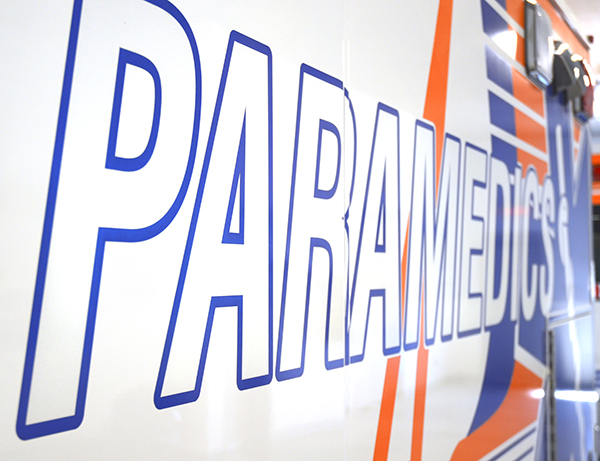As the summer tourist season hits its stride, members of Prince Albert’s emergency services community are asking residents to be calm and patient when reporting medical emergencies.
Lyle Karasiuk, the Director of Public Affairs for Parkland Ambulance, said they see an uptick in calls from visitors who aren’t familiar with the area during the summer months. That can cause difficulty when those visitors call for help following collisions, accidents, or medical emergencies.
“Typically when anyone has an emergency of any type, they’re going to be excited (and) they’re going to be scared and frightened. When you couple that with somebody who’s not quite sure where they are and they’re calling into our medical communications centre here in the north, it makes our job for our medical communications team, a little more challenging,” Karasiuk explained. “In other words, they’ve got to try and figure out from the caller, ‘where are you so we can send you help’, and often the caller is not quite sure, especially if they’re new to the area.”
On an average week, the Parkland Ambulance call centre handles roughly 1,000 calls for service. That number can jump up by as much as 200 calls per week during busy vacation periods in both the winter and summer.
Karasiuk said they don’t have exact numbers on how much of an increase they see in confused callers during the busy season, but it’s enough that dispatchers notice.
“We know anecdotally that we get a larger number of people because we do a lot more types of calls where somebody’s hiking, somebody’s vehicle is involved in a collision, or they come upon somebody who needs assistance, those are the types of things,” Karasiuk said. “There are more travellers, more tourists, it means more people out and about.”
Ideally, Karasiuk said residents should pay attention to immovable landmarks while travelling. Even small things like keeping track of how many minutes it’s been since a driver left Prince Albert can help communications teams get ambulances and other emergency crews on scene faster.
Karasiuk said some callers will sue movable landmarks, like a herd of cows or horses they passed five minutes ago, to try and help responders pinpoint where they are, which isn’t helpful. Other times, callers will rely on items that can’t be seen, like giving the colour of a house in the middle of the night.
This can lead to frustration for callers when dispatchers keep asking questions. It’s not just tourists or visitors either. Even people who are familiar with the terrain can get frustrated.
“(People) might know how to get there, but when you ask them in an emergency to describe it, they might be a bit confused,” Karasiuk said.
“It’s a little hard for us. We need to get some directions, and we need to get those as quickly as possible so that we can help you.”
Karasiuk said some RMs and making improvements by adding five digit numbers on clear blue signs in front of houses, which helps give travellers and easy landmark to identify when reporting an emergency. He’s hoping more RMs and northern resort communities will follow.
He added that emergency crews are grateful for all callers who take the time to stop and help by reporting an emergency. The goal is to remind them that dispatchers need reliable landmarks to help guide emergency responders to the scene, so don’t get frustrated if the questions keep coming.
The questions also help dispatchers determine if police officers or firefighters are needed on scene too.
“All that’s happening in the background, and that’s why the questions are being asked, but people get frustrated,” Karasiuk said. “They just say, ‘why are you asking me questions? I just want help. Send the help quickly.
“We need to reassure the caller that once you’ve reached us in our medical communications centre and we know where you are to send you help, despite the questions we’re asking you, help is on the way.”
@kerr_jas • jason.kerr@paherald.sk.ca


